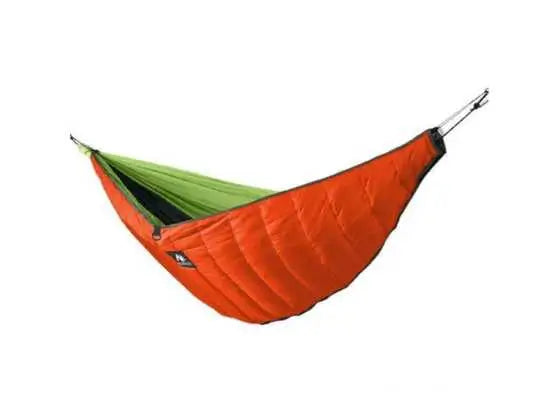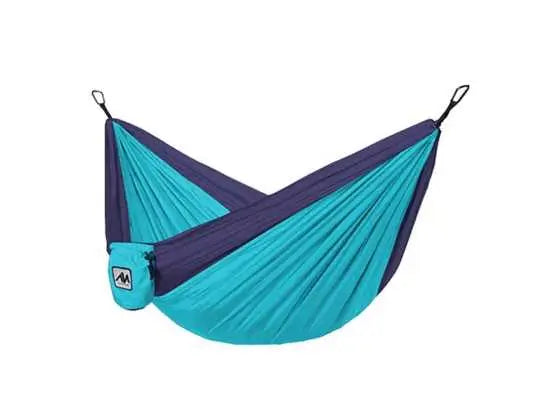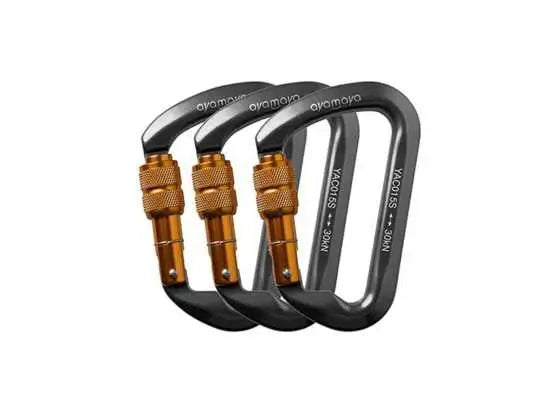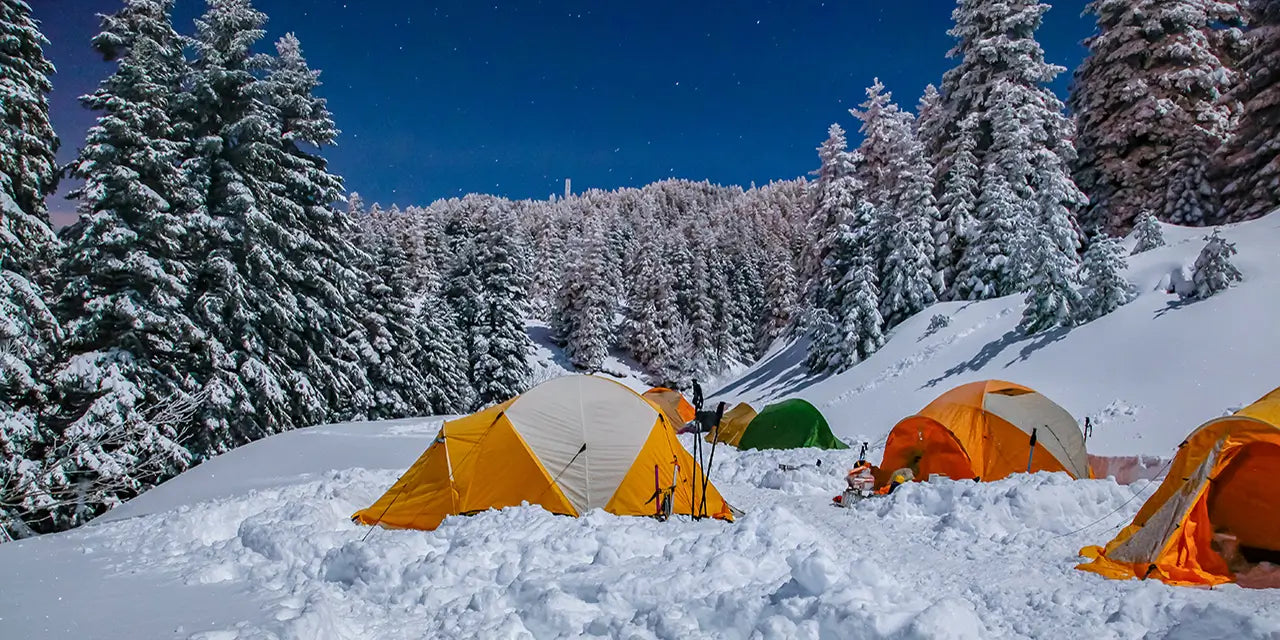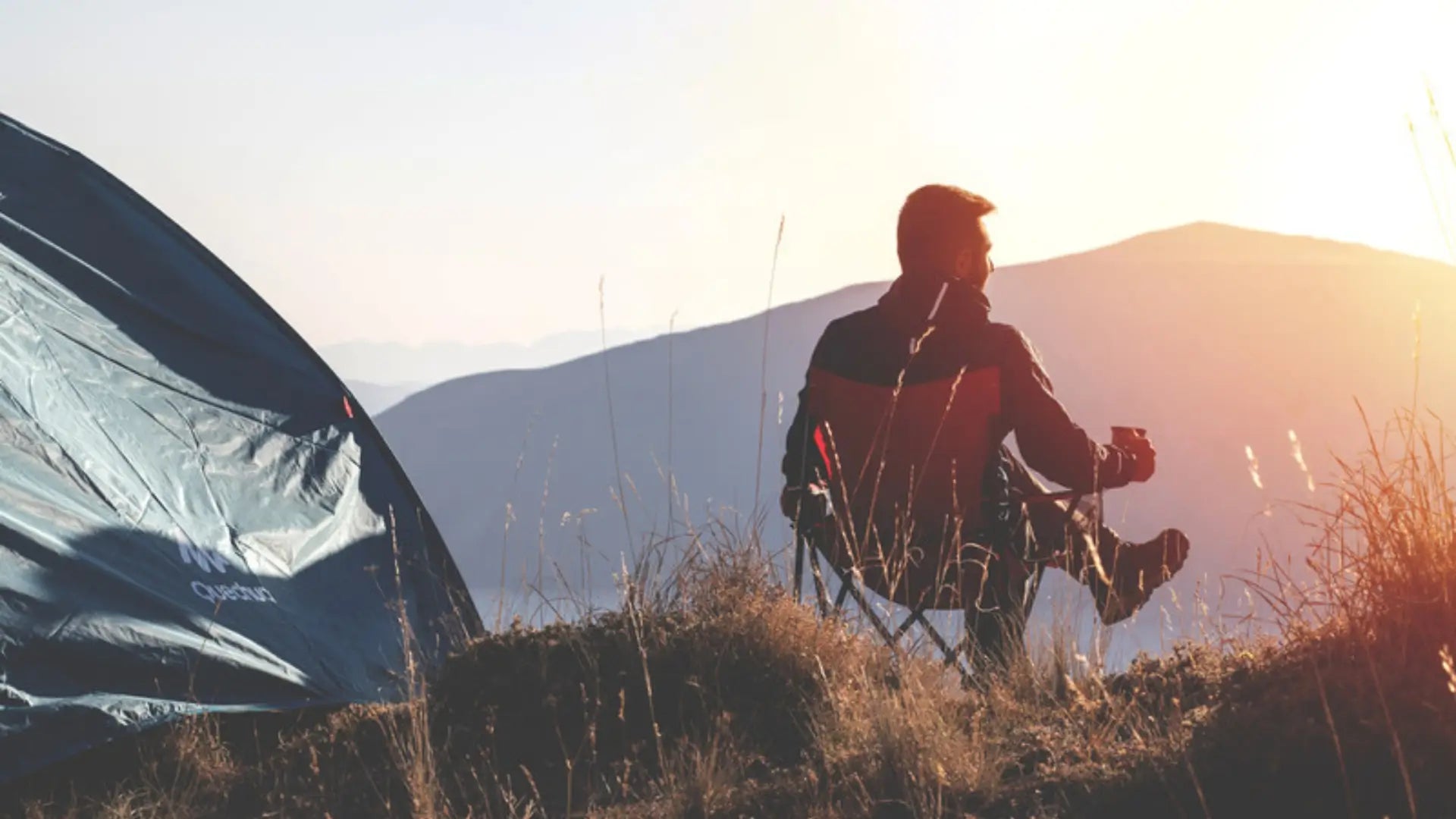Introduction
Winter camping offers a kind of solitude and beauty that summer just can’t match—but it also comes with real challenges. Freezing temperatures, unexpected weather shifts, and the need for specialized gear make cold-weather camping an adventure that demands preparation.
The difference between an unforgettable winter camping trip and a miserable (or even dangerous) experience often comes down to having the right gear. A poorly insulated sleeping bag, an unreliable stove, or the wrong layers can turn a trip from epic to unbearable in no time.
This guide is built for those who love the outdoors but know that respecting the elements is key to enjoying them. Whether you’re heading into the backcountry or setting up camp closer to home, we’ll cover essential winter gear, tested tips, and reliable recommendations to keep you warm, safe, and ready for whatever the season throws your way.
Let’s dive in—because the cold shouldn’t stop your next great adventure.
Section 1: Choosing the Right Winter Camping Tent
Shelter You Can Trust in the Cold
Your tent is your first line of defense against the brutal conditions of winter camping. A regular 3-season tent just won’t cut it when temperatures drop, winds pick up, and heavy snow starts piling up overnight. That’s why a proper 4-season tent is a must—designed to handle harsh weather, keep you insulated, and provide the durability needed for extreme environments.
But not all 4-season tents are created equal. Some are engineered for high-altitude mountaineering, while others are built for cold-weather comfort at lower elevations. In this guide, we’ll highlight options for every kind of winter camper—whether you need top-tier expedition gear, a reliable all-around performer, or a budget-friendly shelter that still gets the job done.
Key Features to Look For in a Winter Tent
- Double-Wall Design: Helps trap heat while providing crucial airflow to minimize condensation buildup inside the tent.
- Strong, Reinforced Poles: Winter storms can bring heavy snow and fierce winds—look for aluminum or composite poles that won’t buckle under pressure.
- Ventilation for Moisture Control: Staying warm is important, but so is staying dry. A tent with adjustable vents prevents condensation from freezing inside your shelter.
- Snow Skirts & Guy-Out Points: Snow skirts help seal in warmth, while extra guy-out points ensure stability in strong winds.

Hilleberg Nammatj 3 GT 4-Season Tent $1395
WINTER TENTS FOR EVERY BUDGET & ADVENTURE:
We’ve gathered some of the best-reviewed winter tents across different price points to help you find the right match:
- 🏔️ The Ultimate Expedition Choice: For those braving the harshest alpine conditions, this high-performance tent is built for extreme cold, high winds, and deep snow, go with the Hilleberg Nammatj 3 GT $1395.
- 🔥 The All-Around Performer: A versatile and well-insulated 4-season tent that balances durability, weight, and affordability—perfect for serious winter campers without the mountaineering price tag. The Alps Mountaineering Tasmanian 2 at $249 hits the mark here.
- 💰 The Budget-Friendly Shelter: If you’re just getting into winter camping or want a solid 4-season tent without breaking the bank, these options offer great protection at a lower cost. The Ayamaya San Gabriel, priced at just $99, has earned excellent reviews for its performance.
In winter camping, your tent is your lifeline. Choosing the right one means staying warm, safe, and ready to take on whatever the elements throw at you.
Section 2: Sleeping Warm:
The Key to a Comfortable Night in the Cold
A winter tent keeps you sheltered, but your sleep system is what truly determines whether you’ll wake up well-rested or shivering at 3 AM. Many first-time winter campers assume that just using a standard sleeping bag will do the trick—until they experience the cold creeping up from the ground or realize their bag isn’t trapping enough heat.
To stay warm in below-freezing conditions, you need a layered sleep system that includes:
- A Subzero-Rated Sleeping Bag – Designed to trap body heat and block out icy drafts.
- An Insulated Sleeping Pad – Prevents heat loss by adding a crucial thermal barrier between you and the frozen ground.
- Strategic Layering – Wearing moisture-wicking base layers and adding an extra liner inside your sleeping bag can add several degrees of warmth.
Key Winter Sleep System Essentials:
- Cold-Weather Sleeping Bag (Mummy Style) – A quality winter sleeping bag is your best friend in freezing temperatures. Look for a 0°F or lower rating, down or synthetic insulation, and a snug-fitting hood to trap body heat.
- Insulated Sleeping Pad – The ground steals heat fast, so a high R-value sleeping pad (4.0 or higher) is a must. For extra warmth, layer two pads—a closed-cell foam pad underneath and an inflatable insulated pad on top.
- Sleeping Bag Liner for Extra Warmth – A lightweight liner can add 10–15°F to your sleep system. It’s also great for keeping your bag clean.
- Moisture-Wicking Base Layers – Avoid cotton! Wear thermal base layers (merino wool or synthetic) to keep sweat away from your skin and retain warmth.

Nemo Sonic 0°F 4-season bag with Thermo Gills™ $549
Winter Sleep Systems for Every Budget & Adventure:
- 🏔️ The Ultimate Expedition Setup – Built for extreme cold and alpine adventures, these sleeping bags and pads provide maximum warmth without extra bulk. Western Mountaineering's Puma GWS Expedition (-25°F) is Ultra-lightweight for its warmth, filled with premium 850+ goose down, and made with Gore Windstopper™ fabric for extreme conditions $1210. The $269 Therm-a-Rest NeoAir XTherm MAX is one of the warmest inflatable sleeping pads (R-value 7.3), designed for high-altitude and extreme cold adventures.
- 🔥 The All-Around Performer – A reliable subzero sleeping bag & insulated pad combo that balances warmth, comfort, and affordability—great for most winter campers. The Nemo Sonic 0°F is a versatile 4-season bag with Thermo Gills™ for temperature regulation and 800-fill down insulation for excellent warmth and lists for $549. The $229 Sea to Summit Ether Light XT Extreme is a solid midrange pad with a 6.2 R-value, offering impressive warmth in a lightweight design and 4 inches of cushioned comfort.
- 💰 The Budget-Friendly Option – Entry-level cold-weather gear that still provides solid warmth for weekend winter camping. At $95, the TETON Sports Altos 0°F is a synthetic-filled bag with good warmth at an affordable price, making it a great choice for casual winter campers. The Klymit Insulated Static V Lite is a budget-friendly option with an R-value of 4.4, providing solid insulation for mild winter conditions comes in at $109.
Pro Tip: If you wake up cold at night, do some sit-ups or push-ups inside your bag to generate heat. Your sleeping bag doesn’t create warmth—it just traps the heat your body produces!
Section 3: Winter Clothing & Layering:
Stay Warm Without Overheating
When it comes to winter camping, dressing correctly isn’t just about staying warm—it’s about staying dry and regulating your body temperature. If you’re sweating on a winter hike, that moisture can freeze later, putting you at risk for hypothermia. That’s why layering is key—giving you the flexibility to adjust to conditions while keeping your core warm and dry.
The golden rule of winter layering? Avoid cotton! Once wet, cotton sucks away body heat and takes forever to dry. Instead, stick with moisture-wicking, insulating, and weather-resistant fabrics that work together to keep you comfortable.
The Essential Layering System for Winter Camping:
- Base Layer (Moisture-Wicking & Breathable) – Your first layer shouldn’t be about warmth—it’s about staying dry. A merino wool or synthetic base layer will wick sweat away from your skin, keeping you warm and preventing chills.
- Mid Layer (Insulation & Heat Retention) – This is where your warmth comes from. A down or synthetic fleece jacket traps body heat while remaining lightweight. In extreme cold, layering a light fleece under an insulated puffy jacket works wonders.
- Outer Layer (Windproof & Waterproof Protection) – A quality hardshell jacket & pants shield you from snow, wind, and freezing rain while allowing moisture to escape. Look for Gore-Tex or similar breathable waterproof materials.
Extremities Matter! – Hands, feet, and your head lose heat fast, so don’t forget:
- Insulated, waterproof gloves or mittens (mittens are warmer than gloves)
- Wool or synthetic thermal socks (always bring an extra dry pair!)
- A windproof hat & neck gaiter or balaclava for full coverage

Patagonia Men's Down Sweater™ Hoody $300
Winter Layering Options for Every Budget & Adventure:
- 🏔️ The Ultimate Expedition Setup – Designed for harsh alpine conditions, this setup includes premium merino wool base layers, ultralight but ultra-warm down insulation, and high-end waterproof outerwear. For subzero temps and high-altitude expeditions.
-
Base Layer: Icebreaker 260 Tech Merino Base Layer Top & Bottoms – $125 each.
- 100% merino wool, exceptional moisture-wicking and warmth.
-
Mid Layer: Patagonia Down Sweater Hoody – $300
- Lightweight, compressible, filled with 800-fill traceable goose down.
-
Outer Shell: Arc'teryx Beta AR Jacket – $600
- Gore-Tex Pro shell designed for extreme conditions—bombproof and breathable.
- 🔥 The All-Around Performer – A solid layering system with reliable synthetic insulation, warm fleece, and a waterproof shell—ideal for most winter campers. Great for serious winter campers and backpackers without the ultra-high cost.
-
Base Layer: Smartwool Classic Thermal Merino Base Layer – $90
- Great performance, warmth, and comfort at a reasonable price.
-
Mid Layer: Patagonia R1 Air Full-Zip Fleece Hoody – $179
- Stretch fleece for mobility and warmth.
-
Outer Shell: Outdoor Research Foray II Jacket – $225
- Reliable waterproofing with Gore-Tex Paclite tech—great for layering.
-
💰 The Budget-Friendly Option – Affordable, well-reviewed gear that offers good warmth and protection without breaking the bank. Solid protection and warmth for casual winter campers and beginners.
-
Base Layer: TSLA Thermal Compression Base Layer Set – $28
- Popular and well-rated on Amazon; surprisingly good warmth and fit for the price.
-
Mid Layer: Amazon Essentials Full-Zip Polar Fleece Jacket – $30
- Basic but effective. Great layering piece for low-cost trips.
-
Outer Shell: Columbia Watertight II Jacket – $75
- Waterproof, windproof, and widely available. A budget staple.
-
Base Layer: TSLA Thermal Compression Base Layer Set – $28
Pro Tip: Always dress for your activity level—wear too much while hiking and you’ll overheat, wear too little while sitting around camp and you’ll freeze. Adjust layers accordingly!
Section 4: Staying Warm & Dry – Campfire, Cooking & Hydration in Winter
When temperatures drop below freezing, staying warm isn’t just about clothing—it’s about keeping your body fueled and hydrated. Whether it’s brewing a hot drink, cooking a warm meal, or starting a fire in the snow, having the right gear and know-how can make the difference between thriving in the cold or just surviving.
Hydration in Cold Weather: Stay Ahead of Dehydration
- Drink Warm Liquids: A thermal bottle with hot tea, coffee, or broth keeps you hydrated while warming your core.
- Prevent Water from Freezing: Use an insulated water bottle and store it upside down—water freezes from the top down, so the opening stays clear.
- Avoid Caffeine & Alcohol Before Bed: Both can dehydrate you and make you colder by increasing heat loss.
Cooking in Cold Conditions: Choose the Right Stove
- Liquid Fuel Stoves: Burn hotter and perform consistently in the cold (unlike propane, which struggles below 32°F).
- Wind Protection Matters: A stove windscreen helps maintain efficiency and prevents heat loss.
- Preheat Your Fuel Canister: If using a canister stove, store it in your sleeping bag overnight to keep it warm for morning use.
Starting a Fire in the Snow: The Right Gear & Technique
- Find Dry Wood: Dig under snow-covered logs for dry inner layers or split larger logs to access dry wood inside.
- Use Fire Starters: Waterproof fire starters (like fatwood, wax-coated cotton balls, or commercial fire cubes) make ignition much easier in cold conditions.
- Elevate Your Fire: Build on a fire platform (use a layer of logs or rocks) to prevent flames from sinking into the snow.

MSR WhisperLite™ International Multi-Fuel Stove $159
Winter Cooking & Hydration Gear for Every Budget & Adventure:
🏔️ The Ultimate Expedition Setup – A high-performance liquid fuel stove, double-wall thermal bottle, and premium fire-starting kit designed for extreme winter adventures.
- Stove: MSR WhisperLite International Stove – Runs on multiple fuel types and performs reliably in freezing temps and high altitudes, runs $159
- Thermal Bottle: Hydro Flask 40 oz Wide Mouth Bottle – Double-wall vacuum insulation keeps liquids hot for up to 12 hours in subzero weather and cost about $49
- Fire Starter Kit: Zippo Emergency Fire Kit – Waterproof case with tinder and reliable flint-wheel ignition, made for rugged conditions, comes in at $13
🔥 The All-Around Performer – A reliable winter backpacking stove, insulated bottle, and easy-to-use fire starter—perfect for casual and experienced winter campers.
- Stove: Soto WindMaster Stove – Excellent cold-weather performance and wind resistance with canister fuel, priced around $69
- Bottle: Stanley Classic Legendary Bottle (1.1QT) – Durable and retains heat for hours, great for hot drinks or soups, costs $40
- Fire Starter: Bayite Ferro Rod 1/2" x 6" – Durable and sparks well even in wet or snowy conditions, $11
💰 The Budget-Friendly Option – Well-reviewed, affordable winter cooking gear that keeps you warm without breaking the bank.
- Stove: Gas One Dual Fuel Stove GS-3400P – Works with both butane and propane; budget-friendly and cold-weather ready for just $39
- Bottle: Thermos Stainless King 40 oz Bottle – Reliable heat retention for hot beverages or soup, keeps hot or cold for 24hours and just $37
- Fire Starter: UST Spark Force Fire Starter – Compact and easy-to-use ferro rod fire starter for $9
Pro Tip: Keep a hot drink handy at all times. It keeps you hydrated, warms you up, and boosts morale when conditions get tough.
Section 5: Winter Camping Safety & Emergency Preparedness
Winter landscapes may be breathtaking, but they also come with serious risks—frostbite, hypothermia, whiteouts, and avalanches are real dangers. Even experienced campers can get caught off guard by sudden temperature drops, high winds, or unexpected snowstorms. Being prepared isn’t just smart—it could save your life.
Understanding Frostbite & Hypothermia
- Watch for Early Signs: Frostbite starts with numbness, while hypothermia can cause shivering, confusion, and sluggish movement.
- Keep Extremities Covered: Wear insulated gloves, thick socks, and a face covering to prevent frostbite.
- Stay Dry & Layer Wisely: Wet clothes drain body heat fast. If you sweat while hiking, remove layers to avoid getting damp.
Navigation & Avalanche Safety
- Carry a Map & GPS: Don’t rely on your phone alone—cold temperatures drain battery life quickly.
- Avalanche Safety 101: In avalanche-prone areas, always check forecasts and carry an avalanche beacon, probe, and shovel.
- Mark Your Trail: If snowfall is heavy, use bright markers, flags, or GPS waypoints to avoid getting lost.
Emergency Heat & Shelter: Be Ready for the Unexpected
- Emergency Bivy Sack: Reflects body heat and acts as an emergency shelter if your tent fails or you get stranded.
- Hand & Foot Warmers: Instant heat packs can prevent frostbite and keep fingers nimble enough to set up camp or start a fire.
- Portable Backup Heat Source: A small propane heater or hot water bottle can be a game-changer in extreme cold.
![]() BCA Tracker™ 4 Avalanche Beacon 2025 $329
BCA Tracker™ 4 Avalanche Beacon 2025 $329
Winter Safety Gear for Every Budget & Adventure
🏔️ The Ultimate Expedition Setup – Top-rated avalanche gear, emergency bivy, and high-performance GPS device for serious backcountry adventures.
- Avalanche Gear: Backcountry Access Tracker4 Avalanche Beacon – Fast, reliable, and rugged for avalanche rescue. About $329
- Emergency Shelter: SOL Escape Pro Bivvy – Breathable and heat-retaining with durable construction for harsh winter conditions at $68
- Navigation Device: Garmin GPSMAP 67i with inReach – Combines GPS and satellite communication for location tracking and SOS. Perfect for remote treks at $599
🔥 The All-Around Performer – A solid winter safety kit with an emergency bivy, navigation tools, and essential heat packs.
- Emergency Bivy: SOL Emergency Bivvy with Rescue Whistle – Lightweight and compact, retains 90% of body heat and includes a whistle for signaling for $20
- Navigation: Silva Ranger Compass – Durable baseplate compass with mirror and declination scale—ideal for winter navigation. Price comes in at $69
- Heat Packs: HotHands Hand & Body Warmers (10 pack) – Long-lasting heat for hands, feet, and sleeping bags in subfreezing temperatures, about $15
💰 The Budget-Friendly Option – Affordable but effective safety gear to stay prepared without overspending.
- Emergency Shelter: Tact Bivvy 2.0 by Survival Frog – Ultra-compact thermal bivy that fits in your palm; retains body heat effectively for about $24
- Navigation: Coghlan’s Map Compass – Simple, reliable baseplate compass under $10
- Heat Packs: Grabber Hand Warmers (10 pair) – A great low-cost solution for all-day warmth during cold hikes and nights at $12
Pro Tip: If you get too cold at night, heat water, pour it into a bottle, and place it in your sleeping bag. It’ll radiate warmth for hours.
Final Thoughts: Gear Up & Get Out There
Winter camping isn’t just about braving the cold—it’s about embracing the beauty of the season. With the right gear and preparation, a snowy landscape transforms into a peaceful, unforgettable adventure. From four-season tents and insulated sleeping bags to warm layers, reliable stoves, and essential safety gear, everything you bring plays a role in keeping you warm, safe, and comfortable in freezing conditions.
Key Takeaways for a Safe & Enjoyable Winter Camping Trip:
- Choose a durable 4-season tent that withstands wind and snow.
- Insulate properly with a cold-weather sleeping bag, sleeping pad, and layered clothing.
- Stay hydrated & well-fed—your body burns more energy in the cold.
- Use a liquid fuel stove and know how to start a fire in snowy conditions.
- Carry emergency essentials like an avalanche beacon, bivy sack, and heat packs.
When you’re well-equipped, winter camping goes from being a challenge to an incredible experience. So, gear up, plan wisely, and enjoy the adventure! You can always count on Ayamaya Outdoor to be your trusted partner out in the wild.



